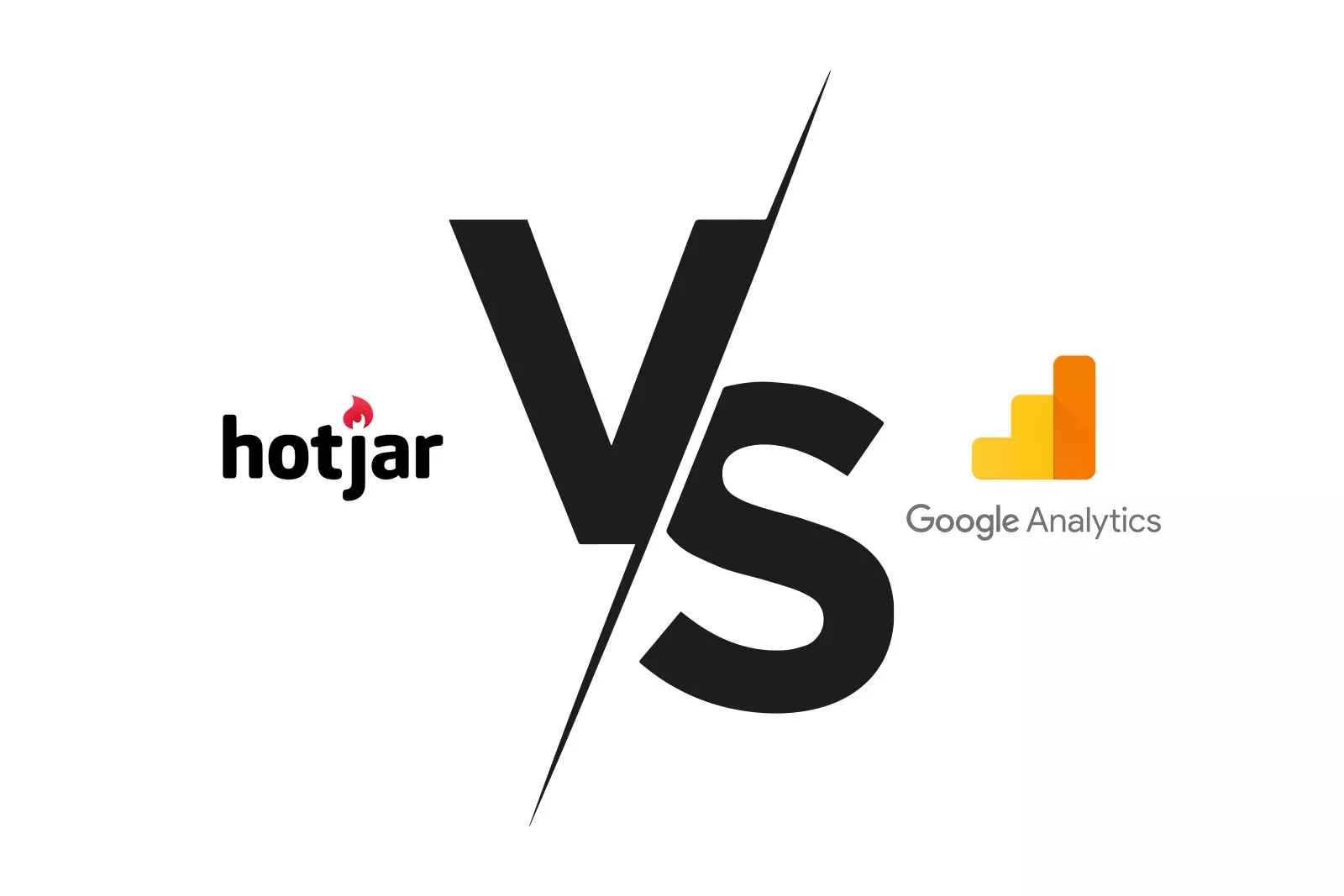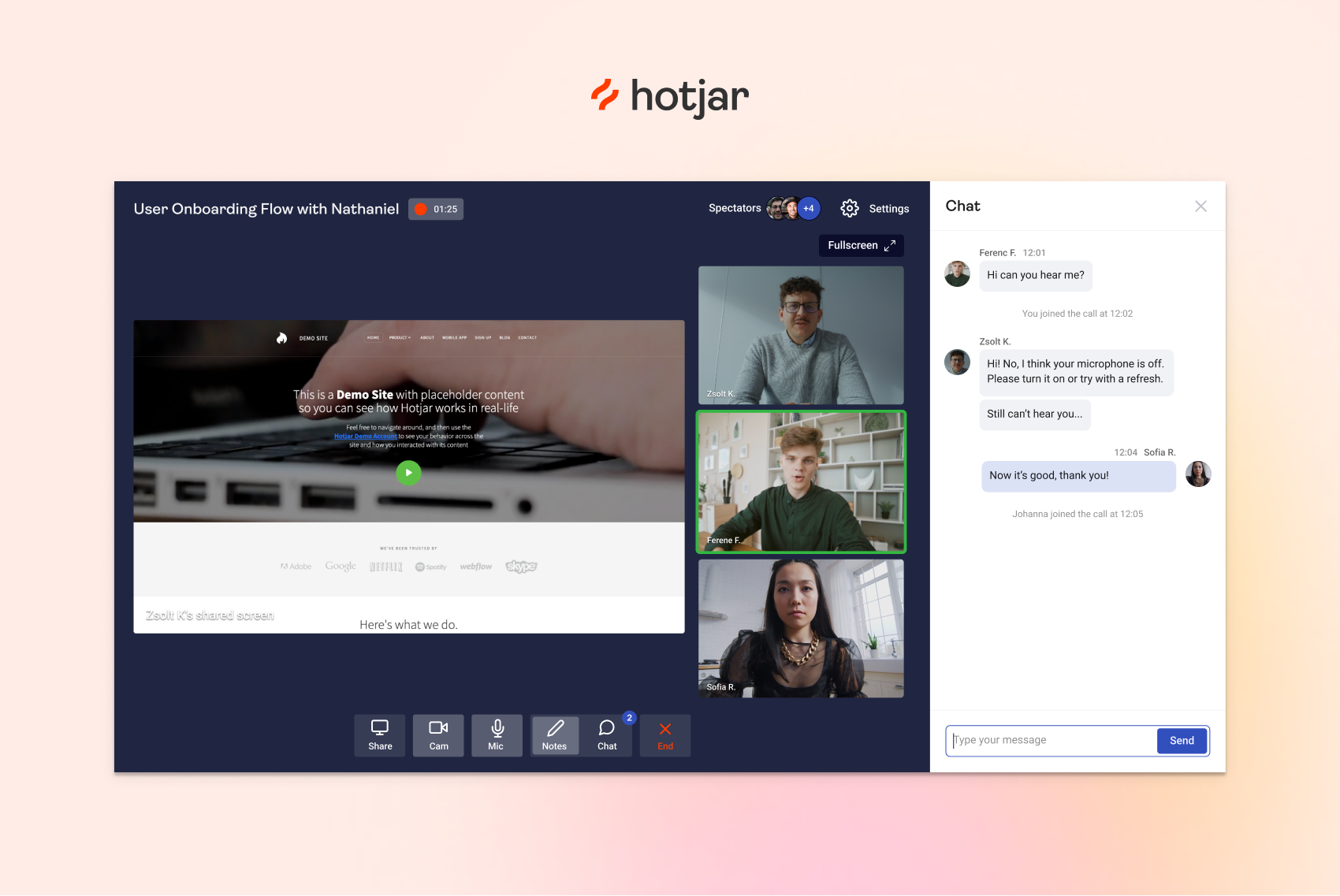As an online business owner, you must know how your users interact with your web app, landing page, website, or...
A good idea without validation is only just that—a good idea. And without feedback from your target audience, you’re not even sure if it’s a good idea for them.
How can you make sure your product will work as promised? Will it meet market demand or be just another failed startup? What if you spend too much money on a business idea that won’t even satisfy the initial user base?
This is where MVP validation comes in. Create a bare-bones version of your idea, test it out with your target audience, then develop it further based on the feedback you collect. Easier said than done, so we’ve compiled the best MVP testing techniques to help you make the right decisions.
What is Minimum Viable Product (MVP)?
A Minimum Viable Product (MVP) is the simplest version of a new product that you can launch. It’s got just the basics—enough to get it out the door and into the hands of users.
The idea is to launch quickly with the core features that solve the main problem, see how it goes, and then modify it based on what real users tell you.
Think of an MVP as your product’s first draft. It’s not perfect, but it’s enough to start the conversation with your customers. This helps you learn fast and update your product before you spend too much time, money, and resources on features that might not hit the mark.
What is MVP Testing and Why Should You Do It?
MVP testing is when you take your Minimum Viable Product—the simplest version of your new idea—and put it in front of real users to see what they think. It’s about throwing your basic product into the real world to gather feedback, see how it performs, and figure out if it actually solves the problem you think it does.
Why should you bother with MVP testing? Well, it’s all about learning and improving before you go all in. It helps you:
- Validate your idea: Before you sink more time and cash into developing your product, MVP testing helps confirm whether your concept has legs.
- Gather valuable user feedback: Direct feedback from users is exactly what you need. It tells you what’s working, what’s not, and what users really need to help you make informed decisions on what features to add, change, or ditch.
- Avoid costly mistakes: By testing a simpler version of your product first, you can avoid the expensive mistake of building a final product nobody wants. It’s a safer, smarter way to innovate.
- Speed up time to market: Instead of perfecting your product in isolation and risking being outdated by the time it launches, MVP testing lets you hit the market faster.
In short, MVP testing is a smart, strategic approach to product development. It aligns your efforts with real user demands and ensures you’re building something that has a real shot at success.
Who is Your Target Audience For MVP Testing?
When you’re rolling out a new product or business model, it’s best to know who to lean on for those first crucial reactions. For MVP testing, think about zeroing in on three main crowds: early adopters, angel investors, and evangelists.
- Early adopters: These people are always on the lookout for the next big thing and don’t mind a few bumps in the road. They’re great for getting honest, hands-on feedback and can really show you how your product performs in the wild.
- Angel investors: These are the savvy investors who have an eye for potential hits and the experience to back their bets. They’re not just about the money; they can offer priceless advice and insights that can help shape your product to better fit the market.
- Evangelists: These are your cheerleaders. They love your product’s vision and can’t wait to tell the world about it. Their enthusiasm can spark interest and draw more users to your MVP.
Tapping into these groups during MVP testing can give you a solid snapshot of where your product stands and what it might need to really shine. It’s a mix of real-world testing and building a crew of supporters who can help push your product to the next level as it grows.
15 Proven MVP Testing Methods for MVP Success
Launching a Minimum Viable Product (MVP) isn’t just about creating the product—it’s also about testing it in smart and strategic ways that set you up for the best possible success.
Here are some of the best MVP testing methods you can use before diving into the development process:
1. Competitive Analysis
Start by sizing up the competition. This means looking at what similar products are out there and understanding their strengths and weaknesses. Competitive product analysis revolves around seeing what they do and spotting opportunities where your product can do better or fill a gap they’ve missed.
This MVP testing strategy might include understanding their products, how they’re priced, the features they offer, and the kind of marketing tactics they use to attract customers. You’ll want to identify both the big players and the small emerging ones in your market.
2. Customer Interviews
Customer interviews are a fundamental part of MVP testing, where you get to chat directly with potential users about what they need and how they feel about existing solutions. This process involves asking your target audience detailed questions to uncover their specific needs, frustrations, and user expectations related to your product’s focus area.
The customer feedback you gather from these interviews is incredibly valuable. It comes straight from the people you’re aiming to serve so it gives you clear insights into what’s important to them.
For instance, you might learn that some features you considered essential aren’t as important to your customers, or you might discover additional features they desperately want.
3. Crowdfunding Campaigns
Crowdfunding campaigns are great MVP testing strategies because they let you see if people are willing to actually put their money behind your idea. By using platforms like Kickstarter or Indiegogo, you can introduce your product to potential backers, explaining what it does, the problems it solves, and the benefits it offers. Then ask for their financial support to bring it to life.
The beauty of crowdfunding is that it doesn’t just help you gather the funds needed to develop your product further—it also acts as a powerful marketing tool. It generates excitement and conversation about your product, helping you reach a wider audience. Plus, the people who back your project often become your first customers and provide valuable early feedback that will help you fine-tune your MVP.
A successful crowdfunding campaign can also prove to other potential investors and stakeholders that there’s a real demand for your product. This proof of market interest can be invaluable when you’re looking to attract more investment or forge new business partnerships down the line.
4. Landing Pages
A landing page is essentially a streamlined web page that’s all about getting visitors to take one specific action, like signing up for more information or even pre-ordering your product. When you’re testing your MVP, a landing page is a super useful tool to measure interest and gather visitor data.
On your landing page, you’ll want to highlight your product’s main features, the benefits it offers, and the problem it’s designed to solve. The goal is to spark enough interest that visitors feel compelled to leave their contact details or engage with your product in some way, like joining a waitlist or participating in a survey.
This MVP validation technique helps you understand how appealing your MVP is to potential customers while building a base of interested users you can reach out to as you refine your product and get ready for a full launch.
5. Blogs
Blogs are a great way to support MVP testing by creating a dialogue around your product. When you write blog posts about the issues your product addresses, the technology it uses, or even your experiences developing it, you’re not just sharing information. You’re also building a connection with your audience.
Through blogging, you can establish your expertise and credibility in your industry. This helps attract readers who are interested in your niche and might be potential customers. Plus, you can easily share these blogs on social media, through email newsletters, or other platforms where your target audience might spend their time.
Including calls to action in your posts, like inviting readers to sign up for more info, participate in feedback surveys, or place pre-orders, can actively engage your audience and convert them into leads.
The interactions and feedback you get from your blog posts are incredibly useful. They give you insights into your audience’s reactions and thoughts about your product, offering a valuable perspective that can help refine your MVP as you prepare for a broader launch.
6. Pre-Orders
Pre-orders are an MVP testing technique that lets you measure customer interest and commitment even before your product is fully ready. By setting up pre-orders, you invite potential customers to buy your product based on what it promises to do and the information you’ve provided, typically before it’s available to ship.
Using pre-orders has a few key advantages. It gives you a clear idea of the demand for your product, helping you make production and inventory decisions without the risk of overproducing. It also brings in some early revenue, which can be crucial for funding the final development stages.
Additionally, you can gather user feedback from people who are invested enough to pre-order. They can provide insights on what drew them to your product and what expectations they have, which can guide you in fine-tuning your final product.
7. Email Campaigns
Email campaigns help you engage with potential customers during the MVP validation process. They offer a direct line of communication to people who have already expressed interest in your product or field. With regular emails, you can keep these potential users updated on your product’s progress, share new developments, and invite them to provide feedback or participate in surveys.
These campaigns are also great for prompting specific actions, such as visiting your landing page, signing up for further information, or placing pre-orders.
Plus, the interaction with your emails—tracked through metrics like open rates, click-through rates, and direct responses—provides valuable insights. This data helps you assess what features of your product catch the most interest and which messages resonate best with your audience.
8. Explainer Videos
Explainer videos are a compelling tool for MVP testing because they provide a quick and visual way to showcase your product’s features, benefits, and the problem it solves. These short, engaging videos are designed to grab attention and make complex information easy to understand.
By using explainer videos, you can communicate your product’s value proposition effectively and efficiently. They work well because they can convey in a minute or two what might take pages of text to explain.
Videos are also highly shareable, which helps increase the visibility of your MVP across social platforms and other online channels.
The feedback you receive from how viewers engage with your explainer video—like how many watch it through to the end, the comments they leave, or the direct inquiries you receive—can provide valuable insights into what aspects of your product are resonating with the audience.
9. Social media surveys
Social media surveys are a smart and cheap way to better understand what potential users think about your MVP. By throwing a few quick questions out on platforms like Facebook, Twitter, or Instagram, you can tap into your followers and even catch the eye of a wider audience.
These surveys let you zero in on what features users are excited about, what changes they might suggest, or just how they feel about your product in general. Since social media is all about easy engagement, you’re likely to get candid feedback that’s straight to the point.
Plus, monitoring how these surveys perform gives you a real-time look at how engaging your product is.
10. Split Testing
Split testing, or A/B testing, is a hands-on method for fine-tuning your MVP by comparing two different versions of something—like a webpage, app interface, or ad—to see which one users prefer. The idea is to tweak one element at a time, such as changing a button color, adjusting a headline, or switching up the layout, while keeping everything else the same.
You then show these different versions to two similar groups of people and track how each group reacts. Do they click more on one version, stay on the page longer, or sign up more frequently? By monitoring these actions, you can see which version hits the mark better.
This approach is great because it’s based on real user behavior, not just guesses or assumptions. It allows you to make informed decisions about your product idea based on solid data, which helps make sure that you’re moving in the right direction with your MVP’s design and features.
11. Single Feature MVP
A single feature MVP is all about zeroing in on one key feature of your product—the part you think makes the biggest impact or offers something truly unique. This approach lets you pour all your resources into perfecting this one element, giving it your full attention to ensure it really connects with users.
When you focus on just one feature, you cut through the noise and complexity. This makes it easier for users to understand what you’re offering and provide targeted feedback. They won’t be distracted by other bells and whistles, so their responses will be specifically about that core feature, which gives you a clearer picture of what works and what doesn’t.
Using a single-feature MVP is especially useful if you’re still figuring out which aspect of your product will be the main draw or if you’re operating with limited resources. It’s a strategic way to test the waters without spreading yourself too thin. It helps you refine and perfect the most important part of your product based on real user interaction or feedback.
12. PPC Campaigns
PPC (Pay-Per-Click) campaigns are a go-to strategy for MVP testing because they let you quickly draw in targeted traffic.
By setting up ads on platforms like Google Ads or social media, you can directly reach folks who are on the hunt for solutions like the ones your MVP offers. The real beauty of PPC is in its precision—you can dial in exactly who sees your ads based on things like demographics, interests, or what they’re searching for online.
Plus, you get a ton of useful data on user interactions, such as how many people saw your ads, clicked on them, or took action, giving you clear insights into how effective your approach is.
And since PPC starts driving traffic almost as soon as you launch your ads, you don’t have to wait long to start gathering valuable feedback and validating assumptions.
13. Paper Prototype
Paper prototyping is a straightforward, cost-effective approach you can use early in the product development process, particularly when working with an MVP.
Essentially, you use simple materials like paper, pens, and scissors to sketch out and build rough versions of your product’s user interface or design. This could be anything from a new app screen to the layout of a webpage, or even a physical product’s basic form.
The real advantage of paper prototyping is how quick and interactive it is. You can draw up a design, put it in front of users, and get their feedback right away—no need for any technical development or big investments upfront. Users can physically manipulate the paper models, point out what they like or don’t, and suggest how things might work better for them.
14. Digital Prototype
Digital prototyping takes your MVP testing to the next level by using digital tools to create an interactive version of your product. This method is ideal for software applications and websites, as it allows you to build something that users can actually click through and interact with, much like the final product.
Using digital prototypes, you can integrate clickable elements and animations that give a real feel of how the product will work. It’s great for examining how users navigate your product, identifying points where they might get stuck, and understanding which features capture their interest.
15. Concierge MVP
A concierge MVP is a hands-on approach where you manually provide the service or function that your final product will eventually automate. Instead of diving into building an automated solution right away, you personally handle customer needs to mimic how the product will work once it’s developed.
This approach is particularly effective for products or services that involve complex interactions or highly personalized experiences—things that are tricky to automate at the outset. Direct interactions with your users help you gain invaluable insights into what they truly value and how they expect the service to perform.
16. Piecemeal MVP
A piecemeal MVP is a smart strategy where you build your product by stitching together existing tools and services rather than creating everything from scratch. This method involves using a mix of third-party applications, open-source projects, and available software solutions to put together a working version of your product.
The goal here is to assemble these various components in a way that lets you test your product idea with real users without diving deep into costly and time-consuming development.
17. Hallway MVP Testing
Hallway testing, often referred to as “hallway usability testing,” is a method where you grab people who pass by in a “hallway” to quickly test ideas or features of your product, usually in the very early stages of development.
This approach is especially useful when you need immediate feedback but don’t have the time or resources to conduct formal testing sessions.
In hallway testing, you don’t necessarily need specialized testers. Instead, you use whoever is available—like colleagues from another department who are unfamiliar with the project—to provide fresh eyes on your MVP.
The idea is to present them with specific tasks to perform using your product and observe where they encounter problems or get confused.
MVP Test With User Feedback and FullSession
When it comes to refining your minimum viable products, integrating user feedback is key, but pairing it with the insights from FullSession takes your testing game to a whole new level. FullSession offers a deep dive into how real users interact with your product, capturing every click, scroll, and pause.
This kind of detailed view isn’t just helpful; it’s a must for spotting the subtle behavior patterns and hiccups that user feedback might not catch! Sign up for FullSession today and create a sound minimum viable product in no time.
FullSession Pricing Plans
The FullSession platform offers a 14-day free trial. It provides two paid plans—Basic and Business. Here are more details on each plan.
- The Basic plan costs $39/month and allows you to monitor up to 5,000 monthly sessions.
- The Business plan costs $149/month and helps you to track and analyze up to 25,000 monthly sessions.
- The Enterprise plan starts from 100,000 monthly sessions and has custom pricing.
If you need more information, you can get a demo.
Install Your First Website Feedback Form Right Now
It takes less than 5 minutes to set up your first website or app feedback form, with FullSession, and it’s completely free!
FAQs About MVP Testing
What exactly is an MVP?
Think of an MVP (Minimum Viable Product) as your product’s bare-bones version. It’s got just enough features to get the ball rolling and gather some initial user reactions without all the bells and whistles.
Why should I bother with MVP testing?
MVP testing is like a reality check for your product. It lets you see if people are actually interested before you pour in too much time or money. Essentially, it’s a way to test the waters before diving in.
How do I figure out who should test my MVP?
Finding your target audience is key. You’re looking for people who need your product and will get real value from it. Start by understanding their problems and what gets them excited. Research, surveys, and interviews can help paint a clearer picture.






